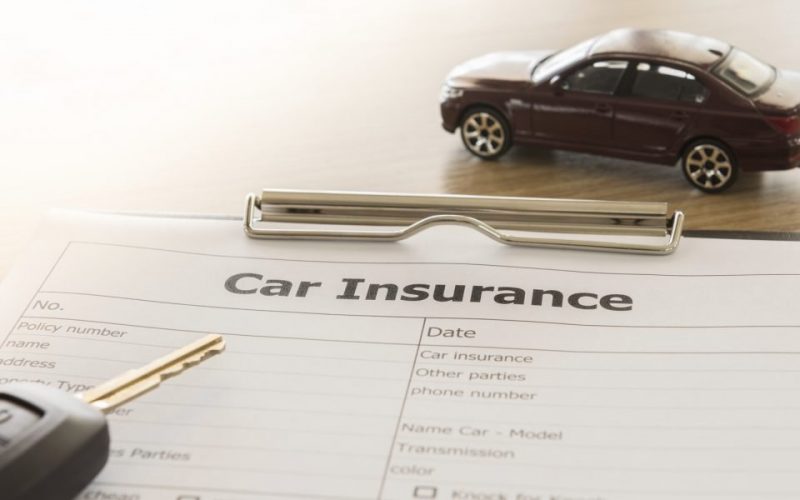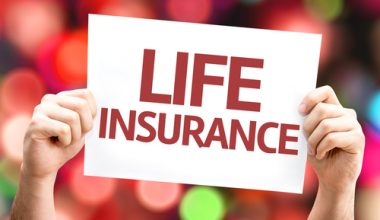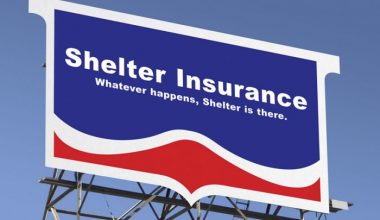When you buy a vehicle, whether it’s new or used, you must have liability car insurance. When you are at fault in an accident, liability car insurance cover the costs of property damage and bodily injury sustained by others. Most individuals combine liability and collision car insurance coverage (which helps cover your personal injuries and property damage). However, there are rare situations when liability-only car insurance is a feasible alternative.
What Does Liability Car Insurance Cover?
If you are at fault in a collision, liability car insurance will cover the medical costs spent by injured parties. They will also cover the costs associated with any property damage. Though policy details vary by provider, liability insurance typically covers the following two types of coverage:
#1. Bodily Injury (BI) Liability:
If you are at fault in an accident, this will cover the medical bills for individuals who were injured. It will also cover lost wages as a result of the injuries. It will also cover costs related with pain and suffering.
#2. Property Damage Liability (PD):
This covers the costs of repairing or replacing objects damaged in the accident. This can include damage to other vehicles as well as other types of property such as houses, fences, and stores.
Understanding Car Liability Insurance
Liability car insurance helps to cover the cost of damage caused by a car collision. If a driver is judged to be at fault in an accident, their insurance company will pay the property and medical expenditures of other parties involved in the event up to the policy limits.
However, in jurisdictions that have no-fault auto insurance, drivers involved in an accident must first submit a claim with their individual insurance company, regardless of who was at blame. In certain states, drivers are often obliged to acquire personal injury protection (PIP) coverage. This covers their own and their passengers’ accident-related medical expenditures.
Failure to obtain liability coverage may result in your license being suspended, fines, or incarceration for repeat crimes.
Car Insurance Coverage Limits for Liability
Liability car insurance includes dollar restrictions on each of its components. This varies depending on the level of coverage you select when purchasing the policy. These are some examples:
#1. Limitation of Liability for Property Damage
This is the maximum amount of coverage for property damage. Any costs in excess of the cap are the responsibility of the at-fault driver.
#2. Limitation of Liability for Bodily Injury per Person
The per-person limit is the maximum amount that an insurance company will pay for each person harmed in an accident.
#3. Limitation of Liability for Bodily Injury Per Accident
The liability limit per accident is a monetary ceiling on the total amount that the insurance company will pay for all individuals involved in an accident. In other words, the policy will only cover medical expenditures for people wounded in an accident caused by the at-fault motorist up to a certain limit. Any medical expenses in excess of that amount would subsequently be borne by the at-fault driver.
Note
In the event that you are sued by a motorist or passenger as a result of an accident, bodily injury liability coverage can safeguard your house and other assets.
Liability Car Insurance Requirements
Each state establishes a minimum amount of liability coverage that a driver must carry. For example, a state may require all drivers to have liability insurance that covers $25,000 for single-person injuries, $50,000 for multiple-person injuries, $50,000 for single-person death, and $10,000 for property damage. Drivers usually purchase additional liability insurance than their state requires. It’s often a good idea to do so because medical expenses can be very expensive.
If you have significant assets to safeguard against a potential lawsuit, you may want to consider purchasing an umbrella insurance policy. This can raise the liability coverage on both your car and homeowners insurance policies to $1 million or more.
Gap insurance is another form of coverage you may require if you drive a high-priced vehicle that depreciates quickly.
What Isn’t Liability Car Insurance Covered For?
Liability insurance will not cover you or your property if you are at fault in a collision. If you were injured or your vehicle was damaged, you may be liable for the injuries of your medical care or car repairs.
Though liability insurance will not cover those costs, you can opt into different policies that will cover drivers even if they are at fault in an accident:
Personal Injury Protection (PIP) Coverage:
This sort of insurance will cover for your medical bills, such as ambulance fees, hospitalization costs, necessary medical procedures, and lost income. It may also cover passengers and any family who live in your home, depending on your policy and insurance provider.
Collision Insurance:
This sort of insurance covers the costs of car repairs and replacements.
Who Is Covered by Liability Car Insurance?
If you plan to drive in the United States, you’ll almost certainly require some form of basic liability insurance. Currently, 49 states and the District of Columbia have laws requiring drivers to carry liability car insurance cover, albeit the type and quantity vary. New Hampshire is the only state that does not mandate drivers to have liability insurance. However, the drivers are still advised to do so.
Read also: BEAR RIVER INSURANCE UTAH: Auto & Home Insurance Reviews
How Much Liability Car Insurance Cover Do I Require?
Begin by reviewing your state’s liability limit laws to determine how much liability insurance coverage you require. Contact your state’s Department of Transportation, visit their website, or speak with a registered insurance agent or broker in your area to learn more about your state’s minimum liability limit requirements.
Another thing to think about is the worth of your personal assets and your ability to satisfy any financial obligations that arise as a result of an accident. While a little fender bender may not result in large out-of-pocket payments, a catastrophic accident or one that causes significant property damage can be expensive. If your state’s minimums are too low, you may find that they are insufficient to cover liability expenses if you are at fault in a collision.
In Pennsylvania, for example, residents simply need to have $5,000 in property damage liability insurance. If you cause an accident that causes $15,000 in damage to another car, several vehicles, or someone’s property, you may be liable for the remaining $10,000. If you are unable to pay, you may be sued.
So, keeping this in mind, the value of your personal assets may assist you in determining if the minimal liability coverage required by your state is sufficient, or if a policy with higher limits is preferable. The Insurance Information Institute, a consumer-oriented group that provides insurance information and tools, suggests acquiring enough liability insurance to cover your personal assets, such as your home and bank accounts.
How Much Does Liability Insurance for a Car Cost?
Car liability insurance costs will vary depending on several factors. This includes the limits you choose, your driving record, your age, where you live, how frequently you drive, and the value of your vehicle, as is typically the case with insurance costs.
Shopping around is the best approach to locate liability insurance that suits your demands and budget. Many insurance firms provide online quotes, which you may compare to get the best car insurance company or the cheapest car insurance.
Take note of any discounts or savings opportunities provided by insurance. Many car liability insurance firms will provide eligible drivers with discounts.
How much Car Liability Insurance Cover should you get?
Any costs that exceed your liability coverage limitations are your responsibility; you must pay them out of your own money. As a result, increasing your auto liability limits over the state’s minimum requirements by getting more coverage may be a good option.
Take into account the following: You are to blame for a collision that injured three persons in another car. Your per-person bodily injury liability limit is $50,000, and your per-accident bodily injury limit is $100,000. You’re probably covered if Person 1’s medical bills total $40,000, Person 2’s are $30,000, and Person 3’s are $25,000 The costs for each person were less than $50,000 (your bodily injury limit per person), and the total cost of injuries is $95,000, which is less than your $100,000 bodily injury limit for a single accident.
But imagine all three people had $50,000 in medical expenses, for a total of $150,000 in medical bills. Hence, in that situation, your bodily injury liability coverage would cover $100,000 of the expenditures, and you would be responsible for the remaining $50,000.
Does My Liability Car Insurance Cover My Car if I get Hit?
If another motorist causes an accident, your liability insurance will not cover your car. So, in this instance, the insurance of the other party should cover your losses. You can also get uninsured/underinsured motorist insurance if you are hit by a driver who does not have enough liability insurance. If you have collision insurance, you may be able to pay your deductible and have the balance of the damages to your car covered by your collision coverage.
Will my Personal Assets be at risk even if I have Car Liability Insurance?
If you cause an accident in which the costs incurred by the other party exceed your liability insurance limit, your personal assets may be jeopardized. Consider getting a policy with a maximum that covers your entire net worth. If your underlying house and auto policies have a limited limit of liability insurance, you can get umbrella insurance to increase your liability protection.
What if I am at fault in an Accident and the other Driver files a Car Liability Insurance Claim?
In most situations, if you are judged to be at fault in an accident and your insurance company is required to pay for the other driver’s damages, your insurance premiums will rise. To keep your premiums low, respect traffic regulations and avoid driving practices that can lead to accidents. Some insurance companies now provide safe driving programs that monitor your driving behaviors and offer discounts for good habits.
Liability Car Insurance Example
Here’s how liability car insurance may function in a state without no-fault insurance. Assume the motorist had the following liability car coverage with their insurance company:
- $60,000 bodily injury liability limit per person
- $150,000 bodily injury limit per accident
The insured is involved in a multi-person collision and is found to be at blame for any losses.
- Person A’s medical costs total $30,000
- Person B’s medical costs total $40,000
- And Person C’s medical costs total $50,000.
In this case, the at-fault driver’s liability would be covered because each person involved in the accident had medical expenses of less than $60,000. Furthermore, the total costs for everyone involved (except the at-fault driver) were less than the per-accident bodily injury limit of $120,000.
It’s worth noting that some policies will not cover any expenses that exceed the per-accident limit, even if the per-person limits are not exceeded. Assume, in the preceding example, that each person had $55,000 in medical expenses. Although those individual costs are all within the $60,000 per-person limit, the total cost of $165,000 exceeds the $150,000 per-accident limit. As a result, the at-fault driver would be responsible for an additional $15,000 in damages.
While states establish legal minimums for car insurance liability coverage, purchasing more than the minimum is frequently a wise decision.
Which Car Insurance offers the Cheapest Liability-only Coverage?
We looked at thirteen top insurance firms in at least five states to see who offered the cheapest liability-only car insurance. The lowest businesses were frequently not household names, although these insurers may not provide coverage everywhere.
For our hypothetical driver:
- State Farm had the most economical liability-only coverage in absolute terms among major insurers, with a six-month quote of just $356, 55 percent less than the average price of $469.
- Geico, with a premium of $409, was not far behind.
- USAA is by far the lowest choice for current or former military members who qualify. It has a six-month rate of only $215.
In addition, some smaller car insurance companies can offer liability-only insurance at a very low cost. For six months, Farm Bureau affiliates cost our sample driver an average of $218, whereas Erie, which is accessible in 12 states and Washington, D.C., costs $226.
The six-month rates for liability Car insurance for all insurance firms that provide policies in at least five states and for which data is available are listed below.
Insurers with a narrower reach — that is, those offered in fewer states — are frequently less expensive, although certain prominent brands, such as Travelers and Farmers, can be rather pricey on average.
| Major insurers | Six-month rate |
| USAA | $215 |
| State Farm | $356 |
| Geico | $409 |
| Progressive | $462 |
| Nationwide | $502 |
| Allstate | $695 |
| Travelers | $706 |
| Farmers | $735 |
| Smaller insurers | Six-month rate |
| Farm Bureau Insurance | $218 |
| Erie | $226 |
| Auto-Owners Insurance | $324 |
| American Family | $405 |
| MetLife | $485 |
These rates are based on a 30-year-old driver with a clean driving record and generally typical driving habits. The lowest liability insurance for you may vary depending on criteria such as accident history, credit score, mileage, and other considerations.
How to Find the Lowest Liability-Only Car Insurance
The most important thing to do while looking for the best pricing on liability-only car insurance is to seek quotes from different insurance companies.
We discovered that the cost of liability-only coverage has no consistent link with the cost of more comprehensive plans.
In other words, just though an insurance company provided the best rates for a full coverage car insurance policy does not guarantee that it will still deliver the best price for a liability-only policy.
Read also: PROFESSIONAL LIABILITY INSURANCE: Errors and Omission Quotes and Companies
How much Less Expensive is Liability-only Car Coverage?
Liability-only car insurance is much less expensive than full-coverage insurance. Dropping optional coverage could cut your insurance bill by more than half: Liability-only policies cost 63 percent less on average among our sample insurers.
We looked at car insurance quotes for eight different popular vehicles and discovered that liability insurance accounts for roughly 48 percent of the entire cost of a full coverage insurance policy, with collision coverage accounting for the lion’s share of the price difference.
Full-coverage insurance typically includes the following:
- Liability insurance.
- Collision and comprehensive coverage.
- Any other legal requirements, such as personal injury protection (PIP)
If you don’t have collision and comprehensive coverage, you’re putting yourself at a substantially higher financial risk if you get into an accident. If you choose liability-only coverage, insurance will not pay for car damage in any of the following scenarios:
- In an accident, you are at fault.
- If you are not required to have UIM coverage, you have been the victim of a hit and run.
- Weather, hail, or animals have caused damage to your car.
- Your car has been keyed or vandalized.
The pricing difference between six-month liability-only and full coverage plans across all of our sample insurers is listed below.
| Company | Minimum coverage cost | Full coverage cost | Difference |
| USAA | $215 | $654 | $439 |
| Farm Bureau Insurance | $218 | $891 | $673 |
| Erie | $226 | $761 | $535 |
| Auto-Owners Insurance | $324 | $1,056 | $732 |
| State Farm | $356 | $869 | $513 |
Read Also: BEST CAR INSURANCE COMPANIES REVIEWS
Car Liability vs. Full-Coverage Insurance
In addition to the liability coverage required by your state, insurers provide collision and comprehensive insurance. A policy that includes all three types of coverage—liability, collision, and comprehensive—is commonly referred to as having “full coverage”. A full-coverage policy is more expensive than a liability-only policy, but it protects you against greater financial dangers.
Collision and comprehensive insurance cover your own car, as opposed to property damage liability insurance, which covers another person’s car if you damage it.
Collision insurance pays to repair or replace your car if it is damaged in an accident involving another vehicle or an object, such as a tree or a wall.
Comprehensive insurance assists in the replacement or repair of your car if it is stolen or damaged in an incident that is not a collision. Comprehensive insurance often covers damage caused by fire, vandalism, or falling items, such as a huge tree limb or hail.
These two types of insurance are not required for vehicles that are owned outright. However, if the vehicle is financed, the lender may need them. Because the vehicle acts as security for the loan, the lender wishes to protect its value. Even if you don’t need to carry collision or comprehensive insurance, you should consider purchasing it unless you can easily cover a large repair expense out of pocket.
Because many of these provisions differ from state to state, it’s a good idea to consult an insurance agent or broker who is familiar with your state’s rules. It’s also a good idea to compare car insurance prices to ensure you’re receiving the best deal possible on coverage.
Factors tthat Affect the Cost of Car Liability Insurance
The cost of liability insurance is determined by a number of factors, including the amount of coverage purchased. The larger your coverage limit, the more you’ll probably have to pay for liability insurance. If you increase your coverage limit, your insurance agent can tell you how much it will cost.
Should I get Liability-only Car Insurance?
When your car is new and becomes less valuable over time, full-coverage car insurance is more important—and a better price.
Collision and comprehensive coverages grow less beneficial as your car matures, and it can be a wise financial decision to cancel coverage beyond a certain point.
This is why:
The most money you’ll ever recover from a car insurance claim for repairs is the vehicle’s actual cash value, or ACV – how much an identical vehicle would cost to buy today.
If your car is deemed a total loss, it indicates that the cost of repairing it exceeds its actual cash worth, and your insurance company will issue you a check for the car’s ACV.
Because your car has a high ACV when it is new, insurance companies will spend more money to fix it before declaring it wrecked.
If the ACV of a new car is $20,000, your insurance provider will pay you a maximum of $20,000 to repair it. However, as your car ages, its value depreciates, lowering the maximum compensation on an accident claim.
If the ACV of your car is $5,000, that is the most your insurer will pay if it is destroyed or stolen.
However, even if the maximum payout reduces, your monthly premium is unlikely to decrease significantly.
This thus makes comprehensive and accident coverage a poorer deal for an old car than for a new one. It’s no longer worthwhile to carry comprehensive or collision coverage at a certain point. You could also consider insuring a low-cost car with broad-form insurance.
When is it Appropriate to drop Comprehensive and Collision Coverage?
When the combined annual premium for comprehensive and collision coverage plus your deductible equals or exceeds the ACV of your vehicle, you should drop comprehensive and collision coverage.
Assume the value of your car is $1,200. If your annual premium for comprehensive and collision coverage is $700 and your deductible is $500, the most you may get is the money you’ve already paid on insurance, so there’s no use in purchasing coverage.
If the value of your car has not yet reached that barrier, the decision becomes less clear-cut and more personal.
The first question to examine is whether you could buy a replacement vehicle or arrange alternate modes of transportation if your car was wrecked or stolen – don’t drop coverage if you’d be stranded without it.
Consider the following propositions as well. The more of these that apply to you, the more strongly you should consider switching to liability-only insurance:
- If your car was stolen today, you could afford to replace it.
- You have a high tolerance for financial risk in general.
- You don’t drive your car very often, and you may rely on alternate modes of transportation such as a bicycle or bus to get around.
- And you are not particularly vulnerable to having your car damaged in an accident (e.g., you do not drive at night often, and you are not younger than 21).
- You are not particularly vulnerable to having a car theft (e.g., you park your car indoors in a garage at night).
Read Also: Personal Injury Lawyer: Why You Need a PI Attorney
Keep in mind that whether you have a lease or a loan, you may still be forced to purchase comprehensive and collision coverage for your car. Most car loan companies need you to obtain these insurance policies in order to preserve their investment while you are still paying it off.
If you opt to drop comprehensive and collision coverage from your policy, we recommend setting aside money for windshield repairs, which can be costly. You may also want to preserve comprehensive coverage if you cannot afford this type of repair out of pocket.
What should I do if I have questions about my car liability insurance policy?
Get in touch with your auto insurance company if you have any inquiries about your liability coverage. You can ask them any questions you have and get more details from them. If you need further assistance, you can always contact your insurance provider or review your policy documents.
Can I cancel my car liability insurance policy at any time?
Changing your mind about having auto liability coverage is completely possible. The cancellation of your policy, however, will result in your losing coverage. It’s important to know that early cancellation of your policy could result in fines or fees. It’s best to talk to your insurance company about your options and concerns before deciding to cancel your policy.
What is the statute of limitations for filing a car liability insurance claim?
There is no universally applicable statute of limitations for auto liability insurance claims. There is typically a short window of opportunity to file a claim following the occurrence of an accident. You may lose your right to seek compensation for damages if you fail to submit your claim within the allotted time frame. If you need to know what the statute of limitations is in your case, you should call your insurance company or an attorney.
What is the claims process for car liability insurance?
Contacting your insurance company after an accident and detailing the damages is typically the first step in filing a claim for car liability insurance. The insurance company will look into the claim to see what kind of coverage it offers. There may be situations in which further explanation or proof is needed from you. Any losses that are covered by your insurance policy will be paid for if your claim is accepted. Your insurance company and policy details will determine the specifics of the claims process.
How do I file a claim for car liability insurance?
Immediately following an accident, you should get in touch with your insurance company to file a claim for auto liability coverage. You’ll need to give specifics about the time, place, and extent of the damage sustained in the accident. You should also include the names and insurance details of any other drivers involved. After filing a claim, an insurance company will examine the details to decide if and to what extent you are compensated.
What happens if I get into an accident with an uninsured driver?
Your car’s liability insurance might help pay for your medical bills and other expenses after an accident with an uninsured motorist. It’s important that you report the incident to your insurance company and file a claim as soon as possible. The extent of your coverage will be examined by your insurance company. Your own pocket may get hit if the other driver isn’t insured against your damages.
Car Liability Insurance FAQs
What if my car is totaled and I only have liability?
If your car is totaled and you only have liability insurance, you must pay to replace it yourself or submit a claim with the other driver’s insurance company. Liability coverage alone does not cover your car in any way; it only protects others from injuries and damage caused by you.
What happens if I total my car and still owe money on it?
If you have a loan or lease on a totaled car, you must still pay off the remaining debt. Typically, the insurer pays the lender or leaseholder first and then provides you the remainder of the settlement money if any is left over.
Should I file a claim if I only have liability?
If you simply have liability coverage, you will not be compensated for damages in the event of a collision unless another motorist is at fault. Minor single-car accidents typically do not necessitate filing a claim, especially if you only cause damage to your own property.






